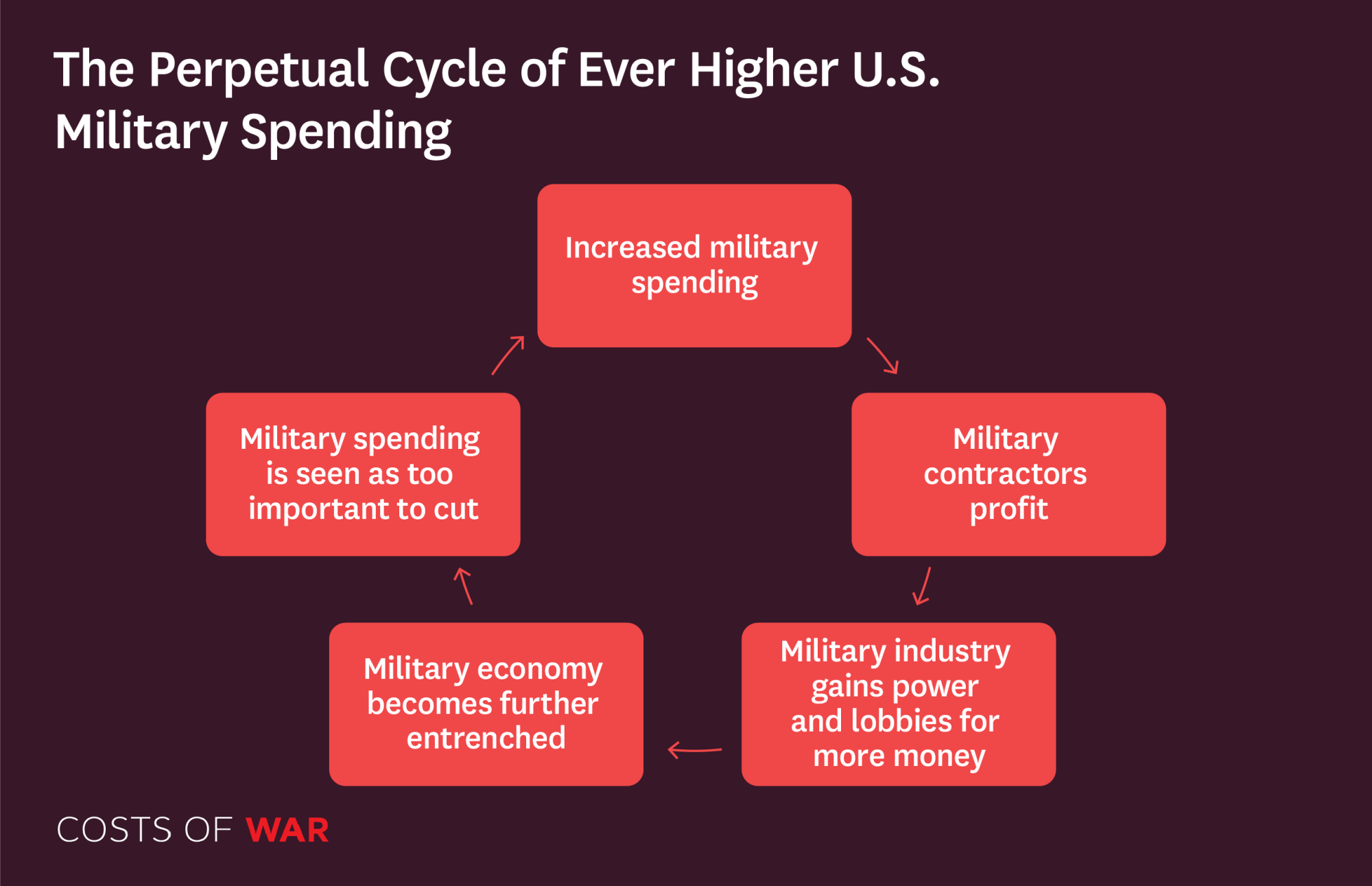
Military spending shapes the balance of political power in the United States. More than half of the military budget goes to contractor companies, especially weapons makers. As contractors obtain lucrative contracts, they gain not only in profitability but also in political influence. They use earnings to lobby and make campaign contributions to ensure greater military spending and increased contracts, and they spread contract dollars to every state and congressional district. Increased resources channeled to the military further increase the political power of military industries, ensuring that the cycle of economic dependence continues — militarized sectors of the economy see perpetual increases in funding and manpower while other human needs go unmet.
When the U.S. military budget decreased after the Cold War, military contractors initiated a strategy to protect their profits, spreading their subcontracting chains across the U.S. and creating an entrenched war economy. Perhaps the most infamous example: Lockheed Martin’s F-35 fighter jet, which is built in 45 states.
What President Eisenhower dubbed “the military-industrial complex” involves the collaboration of the uniformed military and the arms industry in promoting spending that serves their bureaucratic interests and corporate bottom lines, often independently of or in contradiction to considerations of America’s actual security needs. The tools of influence used by the arms industry include not only lobbying and campaign donations, but also a revolving door of people who cycle between jobs in Congress, the Pentagon, and private corporations.
Over the past decade, the U.S. military-industrial complex has been rapidly expanding to include Silicon Valley. A growing portion of the Defense Department’s spending is going to large, well-known tech firms such as Microsoft and Amazon. Emerging military technology companies are also being awarded an increasing amount of Pentagon spending and gaining political power.
Military contracting is politically useful in that it shields from the public view the true costs, both budgetary and human, of war – it is a “Camo Economy.” Contracting reduces the transparency of Pentagon spending through prime contractors and many layers of sub-contractors. It also masks the true human costs of war, including how many people are deployed or working in war zones, and how many deaths and injuries are sustained. In the post-9/11 wars, large defense contractors provided workers who engaged in direct combat and provided supplies, logistical services, and arms to U.S.-led coalition forces and the Iraqi and Afghan governments.
Defense contractors’ practices, including fraud, waste, and corruption, have raised major concerns.
As federal funds are spent on war and the military, fewer funds are available for other types of federal spending and investments. The foregone opportunities involve “opportunity costs,” including the lost opportunities to invest in other areas that are important to societal health, well-being, productivity, and the environment. For instance, federal investment in military assets during the post-9/11 wars was a lost opportunity to make improvements to core infrastructure such as roads and public transit. This has created productivity losses for the private sector, which benefits from public investments in infrastructure.
One of the most significant opportunity costs of military spending is in job creation. Research has consistently shown that dollar for dollar, the military produces fewer jobs than education, health, infrastructure, or clean energy.
Despite the general impression that military spending is good for the economy, research shows that of the 20 states with economies most dependent on military manufacturing, 14 experience poverty at similar or higher rates than the national average.





